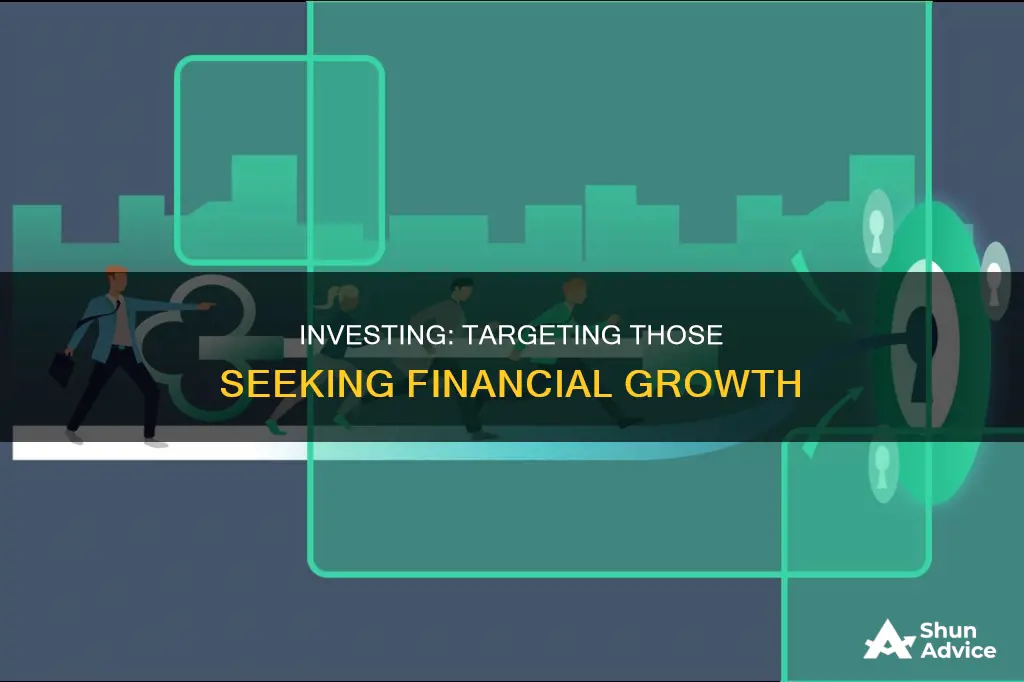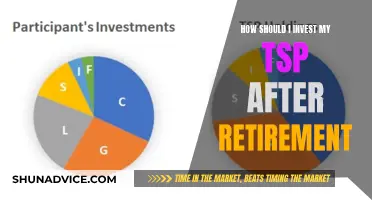
Targeting investors is a crucial step in expanding your shareholder base and raising your corporate profile. It requires a thoughtful and focused approach to identify a strong circle of promising, high-priority investor targets. Here are some key strategies to help you target people who want to invest:
- Understand Investor Style and Metrics: Study the parameters set by institutional investors, such as market capitalization, sector, stage of development, geography, and other fundamental or technical criteria. This will help you identify investors whose interests align with your company.
- Analyze Investor Ownership: Look for investors who have previously invested in or funded similar companies in your industry. This can provide a relevant list of investors who already understand your business domain.
- Diversify Your Conferences: Attend conferences and industry events to meet potential investors and create new connections. These events provide efficient opportunities to meet multiple investors and showcase your company.
- Build a Target List: Create a targeted list of investors who are not only likely to fund your startup but also bring the most value. Consider factors such as location, investment size, personality, vision, and the additional benefits they can offer beyond monetary investment.
- Utilize Online Tools: Take advantage of online platforms and social media to reach a wide variety of investors. Use targeted advertising and investor databases to connect with potential investors.
- Research and Networking: Conduct thorough research on potential investors, including their investment criteria, background, and track record. Network with other founders, advisors, and entrepreneurs to gather insights and identify suitable investors.
By implementing these strategies, you can effectively target people who are potential investors and increase your chances of securing funding for your business ventures.
What You'll Learn

Understand investor style and metrics
Understanding investor style and metrics is crucial to finding investors who will be drawn to your company's profile. Here are some key considerations:
Investment Mandate Parameters
Institutional investors often analyse stocks within specific parameters, such as market capitalization, sector, stage of development (e.g. clinical vs commercial), geography, or other fundamental or technical criteria (growth, momentum, or value). Some investors may also limit their investments to companies within certain indices, such as the NASDAQ Biotech Index or Russell 2000. Therefore, it's important to understand these parameters and reach out to investors whose interests align with your company's profile.
Investment Criteria
Some investors may have criteria that prevent them from investing in pre-revenue companies or those that haven't established proof of concept. For example, a company may need to demonstrate successful Phase 2 clinical trial results. Understanding these criteria will help you avoid pursuing investors whose style and discipline exclude your company.
Financial Metrics
Investors use various financial metrics to evaluate potential investments. Here are some key metrics to consider:
- Price-to-Earnings Ratio (P/E Ratio): This metric compares a company's stock market value to its earnings. A high P/E ratio may indicate an overvalued stock, while a low P/E ratio may suggest an undervalued stock.
- Price-to-Book Ratio (P/B Ratio): This metric compares a company's net assets to the price of its outstanding shares. It reflects the difference between the market value and book value of a company's stock.
- Debt-to-Equity Ratio (D/E Ratio): This metric indicates how much a company has borrowed to finance its business. While a high D/E ratio can be risky, it's important to consider it in the context of the specific sector.
- Free Cash Flow (FCF): FCF measures a company's cash generation after accounting for operational and capital expenses. A rising FCF, along with a low stock price, can indicate potential for stock value appreciation.
Company Management and Competitive Advantage
In addition to financial metrics, investors also consider "softer" metrics, such as the capability of company management and the target market for the company's products or services. They assess whether the company has a competitive advantage, such as a unique business model, innovation, patents, or distribution model.
By understanding investor style and metrics, you can effectively target investors who are most likely to be interested in your company and align with its profile and stage of development.
XRP Investors: How Many?
You may want to see also

Analyze investor ownership
To target the right investors, you must develop a focused and thoughtful strategy. One crucial aspect of this strategy is to analyze investor ownership. This involves looking at investors who have previously invested in or funded similar companies. This step can be challenging in sectors like healthcare, where there are multiple approaches to defining peer groups. For instance, if you own a biotech company, you might want to focus on close peers by considering companies with the same therapy target or mechanism of action, or those whose products rely on the same kind of payer.
Cross-referencing shareholders from such specific peer groups will provide a list of investors who are already familiar with and supportive of your industry. This will allow you to use your time more efficiently and effectively when meeting with potential investors. You can further build on this list by tracking quarterly money flow data to identify investors' ownership trends and those actively investing in your industry.
Additionally, consider the percentage of investors' portfolios invested in your sector and how this has changed over the last few quarters. This will help you identify prospective investors who are committed to your industry and have a strong understanding of it.
Another aspect to consider is the type of investor you want to target. Different types of investors include venture capital firms, angels, and corporate investors. Some investors may have preferences for certain sectors or differentiate based on other factors like funding round stage. Location is also a factor, as some investors may expect you to relocate or give preference to local startups.
When evaluating potential investors, consider their personality, vision, and the value they can bring beyond just monetary investment. Assess their track record in treating founders, participating in follow-on financing rounds, and successful exits. You can request introductions to founders in their portfolio, including those with failed ventures, to understand how they handle challenging situations. Ensure that the investors you target align with your company's goals, investment style, and discipline.
Investing: A New National Pastime?
You may want to see also

Diversify your conferences
Conference attendance is a key activity for any company seeking to attract market interest and is a great opportunity to meet with investors. It is important to diversify your conferences to maximise efficiency and reach the right investors.
Firstly, it is recommended to attend a specific bank's annual healthcare conference. This is a great starting point, but it is important to look for other opportunities as well. Banks are increasingly hosting thematic conferences focused on certain industry areas, such as gene therapy or immune-oncology. These conferences provide an excellent opportunity to showcase your company to investors who have a specific interest in your industry.
On the other hand, if your company fits a broader profile, consider attending non-industry-specific conferences, such as growth conferences. These often attract generalist investors and portfolio managers who have a deep appreciation of the high-growth nature of the healthcare business model and its importance to portfolio performance. By targeting a few non-industry-specific conferences a year, you can increase your chances of meeting new and diverse investors who are seeking new and interesting investment opportunities.
Additionally, you can gain valuable face-to-face time with investors by inviting them to events at your offices. Take advantage of opportunities to host investors onsite or organise an investor day. You can also participate in bank-sponsored bus tours that shuttle investors to a series of brief meetings with companies.
A well-planned conference strategy that targets a range of conferences, including industry-specific and non-industry-specific events, will help you diversify your investor network and increase your chances of finding the right investors for your company.
When Investors Stop Investing
You may want to see also

Know their investment strategy
Knowing the investment strategy of your target investors is key to a successful investor-targeting strategy. Here are some things to consider:
Investment Focus
Each investor group or venture capital fund has a unique investment focus. As an entrepreneur, it is important to identify firms or individuals that have invested in your target industry sector, at your company's stage of development, and amounts that match the range of your target financing round.
Business Experience and Networks
Look for investors who have extensive business experience with prior startups and knowledge of your target industry. Investors with complementary investments and strong networks for business development can also be beneficial. They can help fill in the gaps in your business plan, such as helping to build a management team, board, and advisors.
Investment Track Record
Investors with a solid track record of leading or making investment deals happen and a history of successful business exits are more likely to be attractive partners. They should also be well-connected in the investment community, both locally and internationally, with investment partners who may be attractive co-investors for your financing.
Investment Style and Criteria
Different investors have different investment styles and criteria. Some may be inhibited from buying pre-revenue companies or those yet to establish proof of concept. Understanding these parameters will help you reach out to those whose interests align with your company. For example, institutional investors often analyse stocks that fit within the parameters of their fund's investment mandate, which may include market capitalization, sector, stage of development, geography, or other fundamental or technical criteria.
Investment Goals and Risk Tolerance
When targeting investors, it is crucial to keep in mind their investment goals and risk tolerance. Choose investment options that align with your investors' goals and risk tolerance to create a successful relationship. For instance, mutual funds are a good option for long-term investors, while credit card debt investors are typically more interested in capital gains than interest rates, making them suitable for short-term investors.
By understanding your target investors' investment strategy, you will be able to tailor your pitch, build relationships, and increase your chances of raising capital for your business.
Investing During Depressions: Strategies for Success
You may want to see also

Know their risk tolerance
When targeting people who want to invest, it is important to know their risk tolerance. Risk tolerance is the degree of risk that an investor is willing to take on, given the volatility in the value of an investment. It is an important component of investing and often determines the type and amount of investments that an individual chooses.
An investor with a high-risk tolerance is often described as an aggressive investor. These investors are willing to risk losing money to get potentially better results. Their investments emphasize capital appreciation rather than income or preserving their principal investment. Aggressive investors tend to be market-savvy and follow strategies for achieving higher-than-average returns. Their asset allocation commonly includes stocks and little to no allocation to bonds or cash.
On the other hand, an investor with a low-risk tolerance is often described as a conservative investor. These investors favour investments that maintain their original investment. They seek investments with guaranteed returns and are willing to accept little to no volatility in their investment portfolios. Conservative investors often target vehicles that are guaranteed and highly liquid, such as bank certificates of deposit (CDs), money markets, or U.S. Treasuries.
It is important to note that risk tolerance is not solely based on age, although it is a factor. Younger people are generally considered to have a longer time horizon and are therefore more risk-tolerant. However, people are living longer, and older individuals may still have a long investment horizon. Additionally, factors such as net worth and available risk capital should also be considered when determining risk tolerance. An investor with a high net worth can assume more risk, as they have more money to risk.
When targeting investors, it is crucial to understand their risk tolerance to align with their investment goals. By understanding their risk tolerance, you can tailor your pitch and target investors who are more likely to be interested in your company's profile. This can be determined by assessing their investment style and metrics, such as the types of stocks they typically invest in, the size of the company, the sector, and the stage of development.
ESG Investing: Who's On Board?
You may want to see also
Frequently asked questions
Identify investors who have previously invested in your target industry sector, at your company's stage of development, and who are willing to invest the amount you require. Speak to advisors and other entrepreneurs who have worked with the investor. Look for investors who have complementary investments to your business, who take a collaborative approach, and who are well-connected in the investment community.
Utilize online tools and social media platforms such as AngelList, Venture Hacks, and TechCrunch to target investors. Attend industry events and conferences to meet people in person and get your business in front of potential investors. Consider hosting an event at your offices or taking advantage of bank-sponsored bus tours.
Be prepared to discuss your investment goals and the percentage of their portfolio you're asking for. Understand their risk tolerance and choose investment options that align with their preferences. Know your target investor's market capitalization, interest rates, and investment strategies.







